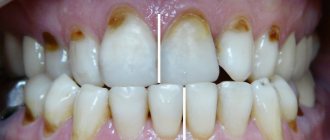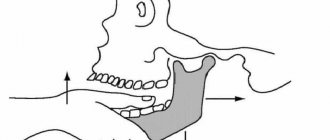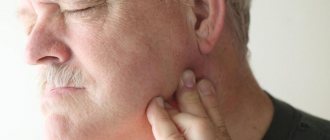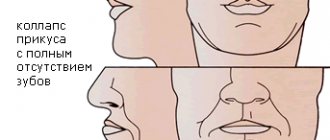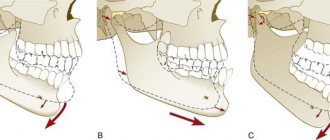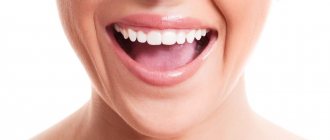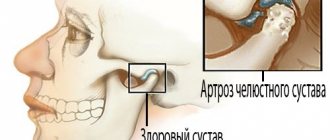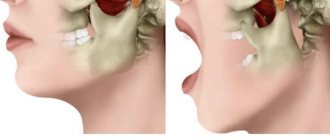45913
Subluxation is understood as such a position of the jaw joint when the articulated surfaces have moved away from one another, while the points of their contact are preserved.
The pathology is characterized by normal joint functionality. The phenomenon occurs in patients of any age, including newborns, but childhood anomalies are diagnosed several times less frequently than subluxations in adults.
Structure
The development of the lower jaw apparatus is one of the most important achievements of human evolution, thanks to which the department acquired mobility and is considered an autonomous part of the cranium, capable of independently performing a number of movements.
The lower temporal joint is the final section of the jaw bone fragment. It is localized in the foveal recess, due to which it is connected to the temporal bone part.
The anatomical structural feature gave a person the ability to speak and chew food fully.
If subluxation occurs, the articular head partially leaves the fossa due to the influence of a number of factors. Often this phenomenon can be observed against the background of a general weakening of the ligaments or small articular depression.
With certain skills and experience, if this happens often enough, the patient himself is able to put the jaw in a normal position.
Normal disc position
Magnetic resonance imaging (MRI scan) clearly shows the position of the articular disc with the mouth open and closed. The acrylic models of the temporomandibular joint below show the position of the articular disc even more clearly. These models show the bone structures in white and the disc in red.
Acrylic models of healthy TMJ. If the mouth is closed, the articular disc is in its normal position; if the mouth is open, the disc follows the movement of the articular head on the condylar process
Causes
In order for the lower jaw to leave its place of dislocation, an external force is required on it, the intensity of which exceeds the force that fixes them in the bursa.
Anatomically, this strength is individual for each person. Many cases have been identified where even a strong mechanical impact on a given area does not bring serious consequences and everything is limited only to a bruise.
At the same time, there are many people for whom even a simple slap in the face can provoke a similar phenomenon. The reason for this is the insufficient tension of the ligaments and the weak attraction of the bones themselves.
In this case, the catalysts for subluxation are chronic factors that cause the problem with a certain consistency:
- rheumatism in advanced stages;
- progressive arthritis;
- osteomyelitis or diagnoses that contribute to deformation of the articular area;
- convulsive manifestations;
- consequences of encephalitis;
- epilepsy attacks.
In addition, there are a number of traumatic factors that can lead to subluxation:
- mechanical injuries of the jaw , for example - a blow of varying degrees of intensity;
- excessive opening of the mouth during chewing of food fragments, gagging, yawning;
- bad habit of using the oral cavity for other purposes than its intended purpose - cracking nuts, tearing too hard objects, opening bottles;
- congenital deformation of the articular socket , not of a pronounced nature - in such a situation the head often pops out of the socket. Due to the anatomical structure of the jaw, this anomaly is more often diagnosed in women.
You still don’t know why your lower teeth hurt? Let's figure it out together.
Read here whether you can take Analgin against toothache.
At this address https://www.vash-dentist.ru/lechenie/chelyust/tsementoma-osobennosti-zabolevaniya-sposobyi-diagnostirovaniya.html we will tell you about the danger of mandibular cementoma.
Displacement classification
Depending on the type and manifesting factors, as well as the specific position of the articular head, subluxations are classified:
- anterior - the head is located directly in front of the recess;
- posterior – the articular head is localized in the posterior region of the bursa;
- lateral - with such pathologies, the head sharply moves to the side in relation to the fossa.
It is worth noting that the anterior form of subluxation is most often observed; it is for this reason that there are several more ways to treat it than for other clinical cases.
In addition, subluxation can be:
- unilateral - manifests itself when the pathology is deviated either into the right or left temporal bone and the jaw itself;
- bilateral - both jaw joints move simultaneously.
There is also a division of the diagnosis into simple and complex types of subluxation. In the first case, the joint is only slightly displaced, in the second, partial ruptures of ligaments, muscle and connective fragments of soft tissue may occur.
Formation of adhesions
If this condition lasts for a long time, it is important to immediately contact a specialist in temporomandibular joint pathology. If such blocking continues for several days, then even a specialist will find it very difficult to put the disk back in place. The longer an irreducible disc slip is left untreated, the greater the risk of adhesions forming in the joint, which will lead to permanent limitation of mouth opening.
Extensive adhesions in the upper floor of the joint with signs of severe inflammation. The commissure is divided with microscissors under visual control during arthroscopy
Symptoms and signs
Despite the fact that each form of pathology has its own specific symptoms, which manifest the presence of deformation, all of them are generally characterized by symptoms that are common to absolutely all types of the disease.
These include:
- pain syndrome of varying degrees of intensity. Occurs at the slightest attempt by the patient to move the lower part of the jaw apparatus;
- inability to make multidirectional movements;
- excessive production of salivary secretion - due to the difficulty of swallowing liquid, and the pain associated with this process.
In addition to the general signs that indicate the presence of an anomaly , bilateral dislocation of the anterior zone is characterized by the following specific manifestations:
- the forced need to keep the mouth wide open, since jaw closure is almost impossible;
- pain in the skull and swelling in the ear area;
- Partial dysfunction of the speech apparatus - speech becomes incoherent and unclear, which makes it difficult to understand the interlocutor.
With anterior subluxation on one side, the symptomatic manifestations are similar to those described above, with the only difference being that they will only appear unilaterally. However, there is still one distinctive feature - the mouth can be slightly covered.
Symptoms that suggest bilateral posterior subluxation:
- severe discomfort bordering on pain and swelling of the skull in the ear area, while the swelling itself may appear a little later;
- the mouth is tightly closed, and it is almost impossible to open it even partially;
- the lower jaw row goes back towards the larynx;
- the patient is unable to lie down and almost immediately has difficulty breathing;
- incoherent speech.
Lateral subluxation:
- the jaw sharply shifts in one direction, which is clearly visible during a visual examination by a specialist;
- pain syndrome is localized in the area where the joint is located;
- speech is slurred.
How to distinguish from a dislocation
Dislocation of the lower jaw is not just a partial displacement, but a complete exit of the head of the joint from the recess of the fossa. This is the fundamental difference between these two diagnoses, which can only be made accurately in a clinical setting.
To do this, the patient, after a visual examination by a specialized specialist, is prescribed an x-ray. Based on its results, the degree of displacement is determined and a final diagnosis is made.
It is worth noting that the symptoms of this pathology are almost identical. The only difference is in the intensity of manifestations of the main signs of the disease.
In the case of a dislocation, all the signs described earlier will be more pronounced. The pain syndrome is much more intense than in the case of jaw subluxation. Its treatment requires qualified medical assistance.
Reducible articular disc displacement
The condition when the disc slips forward from its normal position is called a slipped disc. At first, the articular disc is in front of the condylar process of the mandible only when the mouth is closed, and as the mouth opens, it slides back onto the condylar process. This process is accompanied by a clearly audible click in the temporomandibular joint.
Reducible displacement of the articular disc. The disc dislocates forward if the mouth is closed and slides back onto the condylar process if the mouth is opened
Therapy
Regardless of the form of the pathology, it requires realignment of the joint into the jaw fossa. Depending on the complexity of the clinical picture, several adjustment methods can be used to eliminate the problem.
Hippocratic method
Only an orthodontist can put the jaw back in place. Before carrying out the manipulation, he wraps the thumbs with a sterile cloth, sits the patient on a chair, and stands facing him. Everything is done under local anesthesia.
The wrapped fingers are placed on the molars, and the rest tightly grasp the entire jaw.
The doctor gently presses on the bone, relaxing the chewing muscle tissue. Then the jaw moves back, and then sharply upward. A click indicates that the joint is in place. The jaws will close spontaneously.
At the end of the procedure, the patient is given a sling-shaped bandage, and the load on the affected area is minimized for 14 days.
Basics of treatment of osteomyelitis of the upper jaw and expected prognosis.
In this publication we will talk about laser vestibuloplasty of the lower jaw.
Here https://www.vash-dentist.ru/lechenie/chelyust/opisanie-pereloma-nizhney.html we will talk about methods of treating a fracture of the lower jaw.
Popescu method
It is carried out when diagnosing an anterior dislocation in an advanced stage of its course. The method is justified when any other methods are ineffective. Based on the situation, either general or local anesthesia is prescribed.
All actions are carried out with the patient in a horizontal position. Between the lower molars and upper teeth, rollers made of soft fabric or bandage with a diameter of about 15 mm are attached.
The doctor applies pressure to the chin area upward and backward. This way the joint moves into the desired position.
Based on prostheses
It is carried out when there is a risk that the situation will become systemic. Special orthodontic devices – splints – are fixed on the teeth. They are classified into two types - removable and non-removable. The main purpose is to prevent the oral cavity from opening to its full potential.
In the vast majority of cases, this method of treatment is a successful relief from the pathology , with the exception of rare minor difficulties associated with the degree of mobility of the joint itself.
Jaw distortions
Our clinic’s specialists have extensive experience in identifying the causes of jaw misalignments and correcting them. If you are concerned about this problem, contact us!
A frequent reason for contacting our clinic is patients’ complaints about “distortions” of the jaws. Some people's jaw moves to the side when opening and closing their mouth. Some people have a jaw on the side even when their mouth is closed.
Such jaw distortions themselves are not a problem, but a sign, a symptom. And always, in order to eliminate the imbalance itself, it is necessary in each specific case to understand the cause and mechanism of its occurrence. And based on the reason, plan response therapy.
And the reasons for such distortions can be completely different.
Diagnostics is the first and key step in the treatment of jaw displacement. Do you want to know why it’s impossible to do without diagnostics?
Sideways displacement of the lower jaw when opening or closing the mouth can be a symptom of temporomandibular joint dysfunction (TMJ). Such distortions may be accompanied by “sound effects” (clicking or crunching in the TMJ area).
Deflexion and deviation. Trajectory of the lower jaw when opening the mouth with TMJ dysfunction.
A distinction is made between deflexion, when the lower jaw moves to the side when opening and closing the mouth (persistently moves away from the center line) and deviation, when the lower jaw moves away from the center line and then returns to its place.
Also, skew (to one side), displacement of the lower jaw can be caused by cranial problems (see “Deformations of the cranial bones”). Cranial (cranial) problems are the cause of misalignment of the upper jaw. Which leads to an inclined occlusal plane (smile line).
A crooked jaw is a common “related product” of malocclusions (see Malocclusion). In particular, crossbite, distal occlusion, or mesial bite. Accordingly, the misalignments of the jaws themselves must be eliminated as part of the general treatment (correction) of malocclusion in a particular patient.
Sometimes, when jaw misalignments are caused by structural problems, such as different lengths of the articular condyles of the lower jaw, surgical correction may be required.
During a direct examination by a specialist, you will be able to find out your exact diagnosis, as well as receive a referral for diagnosis or a treatment plan.
Sergei Vladimirovich Yashin
author of the article
Dentist-orthodontist, maxillofacial orthopedist
More than 7 years of experience
Reviews
Regardless of the reason why subluxation of the jaw develops, the situation should under no circumstances be left to chance. The main thing is to contact the clinic in a timely manner.
If you have encountered this anomaly from your own experience, you can leave your comment in the appropriate section, and perhaps this will be extremely useful to someone.
If you find an error, please select a piece of text and press Ctrl+Enter.
Tags: jaw subluxation
Did you like the article? stay tuned
Previous article
What is dangerous about viral stomatitis in children and the subtleties of its treatment
Next article
Technological features of All on 4 implantation
